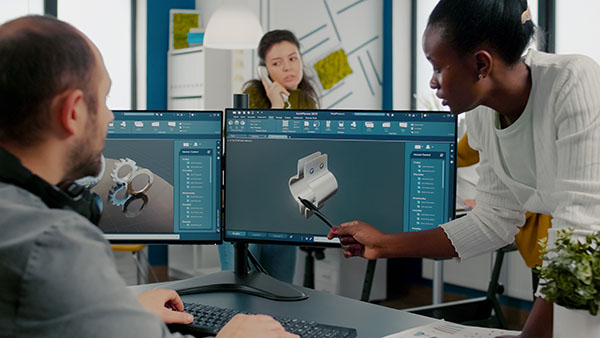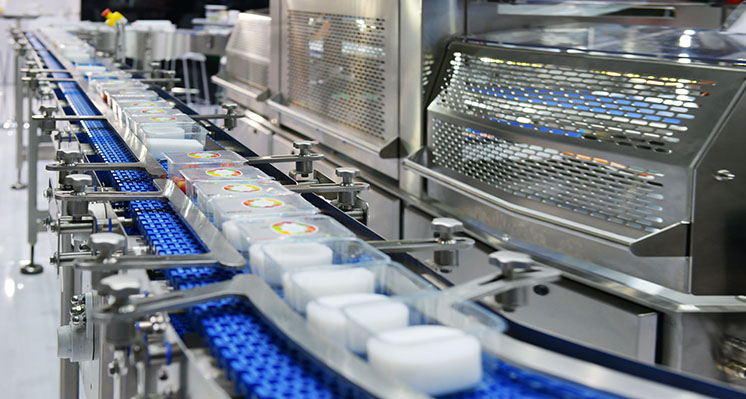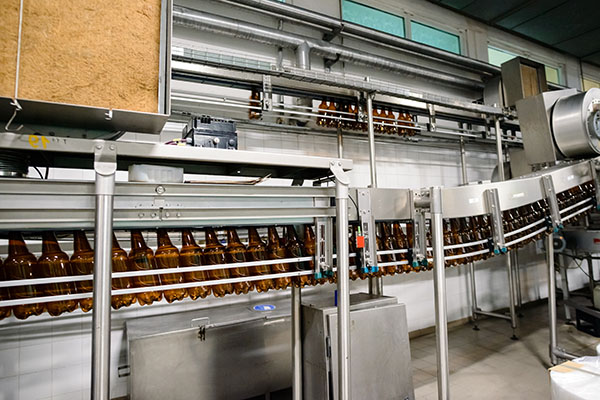The Challenge – Process Design
Client: Food manufacturer
Objective: Double their output in 2-3 years
A leading manufacturer of specialty desserts had the opportunity to double its revenue (to $120MM) without the need to develop new clients or products. How is this possible? Read on to learn how Sterling Engineering partnered with the manufacturer to improve its process design and establish the plan needed to implement the improvements.
By working together, Sterling determined the company’s semi-automated manufacturing process was labor intensive and not synchronized to scale into an integrated production system. Furthermore, their product cooling method was not conducive to high-speed production or food safety.
Finally, although the company had sufficient capital available for investment, it did not have the engineering resources to develop a CapEx (capital expenditure) plan that allowed them to double its process output incrementally in 2-3 years.
Process Design Phase One Solution – Engineering Assessment
In the first phase, we completed an engineering assessment focused on creating an action plan to satisfy our client’s needs. Sterling took the following three-step approach.
Step 1: Define the Future State: Sterling’s engineers partnered with our client to determine expected outcomes in terms of explicit wants versus needs. This prioritization is important – helping our client make smart investment decisions and improvements that would have the greatest influence on the business.
Step 2: Outline the Current State: Our engineering team observed 10 current production lines (raw materials through finished goods refrigerated warehousing); carefully documenting, measuring, and analyzing the current process.
For each process we:
-
- Defined the sequence of operations
- Inventoried existing asset’s condition/capability
- Identified process bottlenecks
- Measured existing equipment/facility
- Created 3D models of production process/facility
- Analyzed SPC/downtime data to establish OEE (overall equipment efficiency)
- Conducted line loading analysis to determine the capacity of existing production lines to meet estimated sales volume by product SKU
Step 3: Design the Future State: Outline our recommendations.
-
- Conducted gap analysis between the current state process and future state expected outcomes
- Inventoried solutions (technical & process equipment) that could be eliminated/reduced bottlenecks in the processes
- Ranked solutions relative to complexity/cost/schedule
- Met with client to review/decide which solutions would be prioritized relative to the capital equipment/cashflow expectations

Process Design Phase Two Solution – 3-Year CapEx Plan
In the second phase, Sterling engineering created a three-year CapEx plan for our clients. Smart capital expenditures can help companies incrementally grow because the purpose is to focus on assets meant to benefit the business in the long term. The following steps were implemented to develop the plan.
Step One: Reviewed capital equipment, continuous improvement initiatives, and solutions that were already started or purchased by the client before Sterling’s involvement.
Step Two: Developed a 3-year CapEx plan to outline the process/capital equipment improvements that would be executed each year to maximize the production output, and reduce headcount, while maintaining cash flow expectations.
Step Three: Created 3D models of the production processes to depict the evolution of the facility over the timespan of the CapEx plan.
Step Four: Provided the project management/engineering support that specified equipment requirements, prepared bid packages, recommended suppliers (machine shops, electrical/mechanical contractors, equipment suppliers), and installed and commissioned the elements of the CapEx plan. When the equipment was not commercially available within the client’s schedule/cost constraints, Sterling designed custom solutions, and created engineering documentation (detailed part/assembly drawings) for machine shops to fabricate, assemble and install the solution at the client’s facility.
Phase One Results – Engineering Assessment
Sterling met with the client to review the assessment deliverables that included a summary of the client’s expected outcomes, a 3D facility model of the current/future state scenarios (depicting facility, process equipment, raw material, and finished goods storage), a prioritized list of recommendations (continuous improvement initiatives, process/equipment changes ranked relative to complexity/cost/schedule) that deliver the client’s expected outcomes. After review, the client used the insight to select the CapEx plan that supported their annual revenue growth rate goals without exceeding their cash flow constraints.



Project Size
$34K Engineering
Duration
9 Weeks
Project Team
2 Engineers
Phase Two Results – 3-Year CapEx Plan
The Sterling team developed a 3-year, $10MM CapEx plan that included high-speed production equipment, packaging lines, robotic palletizers/stretch wrappers, blast freezers, expanded freezer warehouse, and refrigeration/power utility upgrades.
Executed 1st year of CapEx plan:
- Cold Product Production
Semi-automated formulation stations including shear mixers, bulk mixing tanks, transfer pumps, and elevated reservoir tanks reduced headcount by 6 persons and increased the department’s production/revenue by 16% - Hot Product Production
The high-speed fill line increased the department’s production/revenue by 45% - Finished Goods Freezer
Increased WIP (work in progress) cooling capacity by 40% - Semi-Automated Case Packing
Reduced headcount by 4 persons and increased output by 20%



Project Size
$312K Engineering
$1.5MM Capital Expense
Duration
41 Weeks
Project Team
5 Engineers